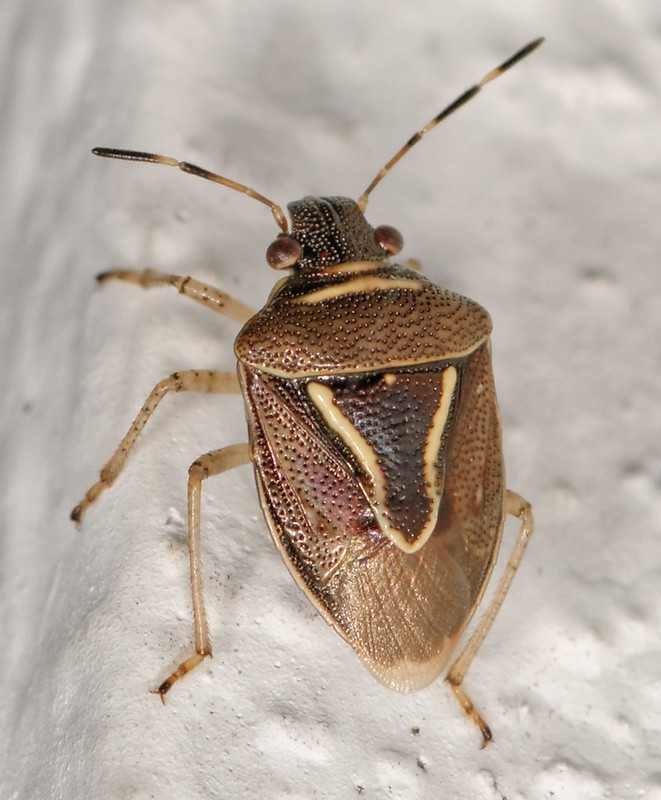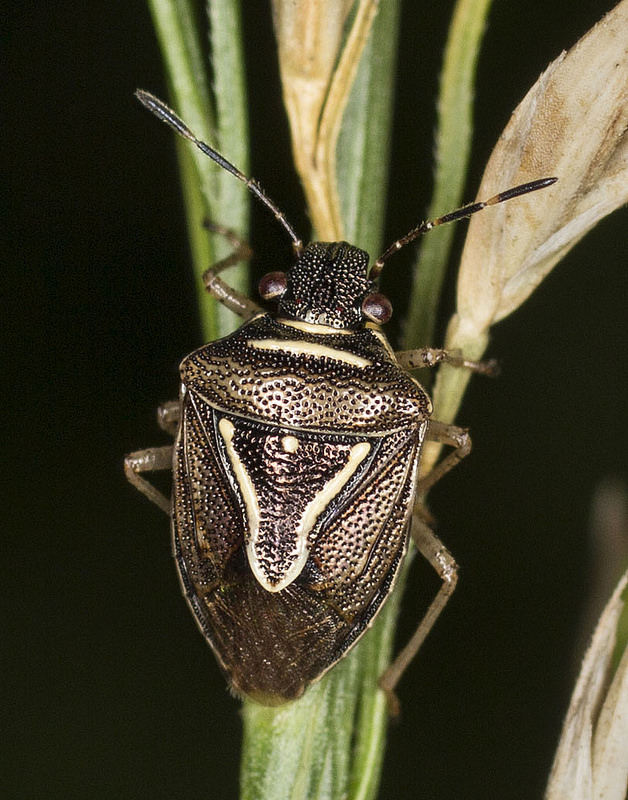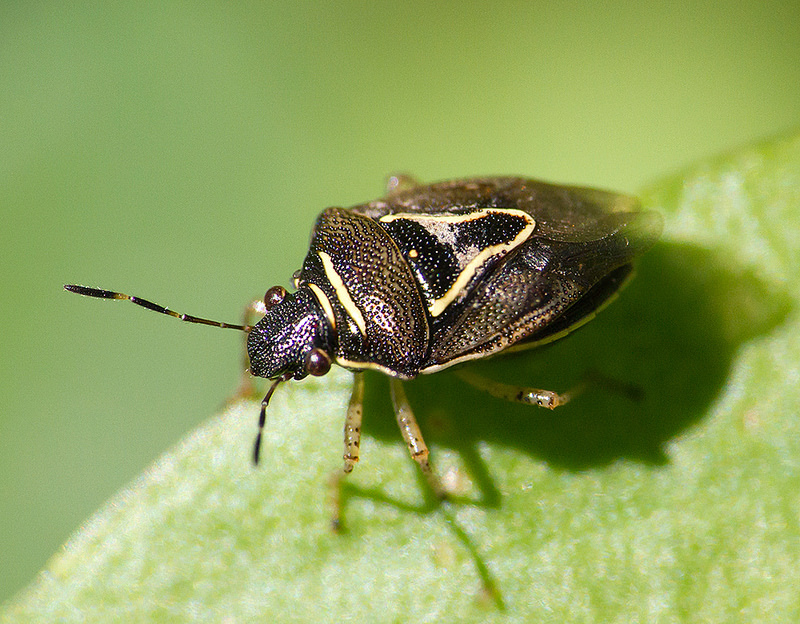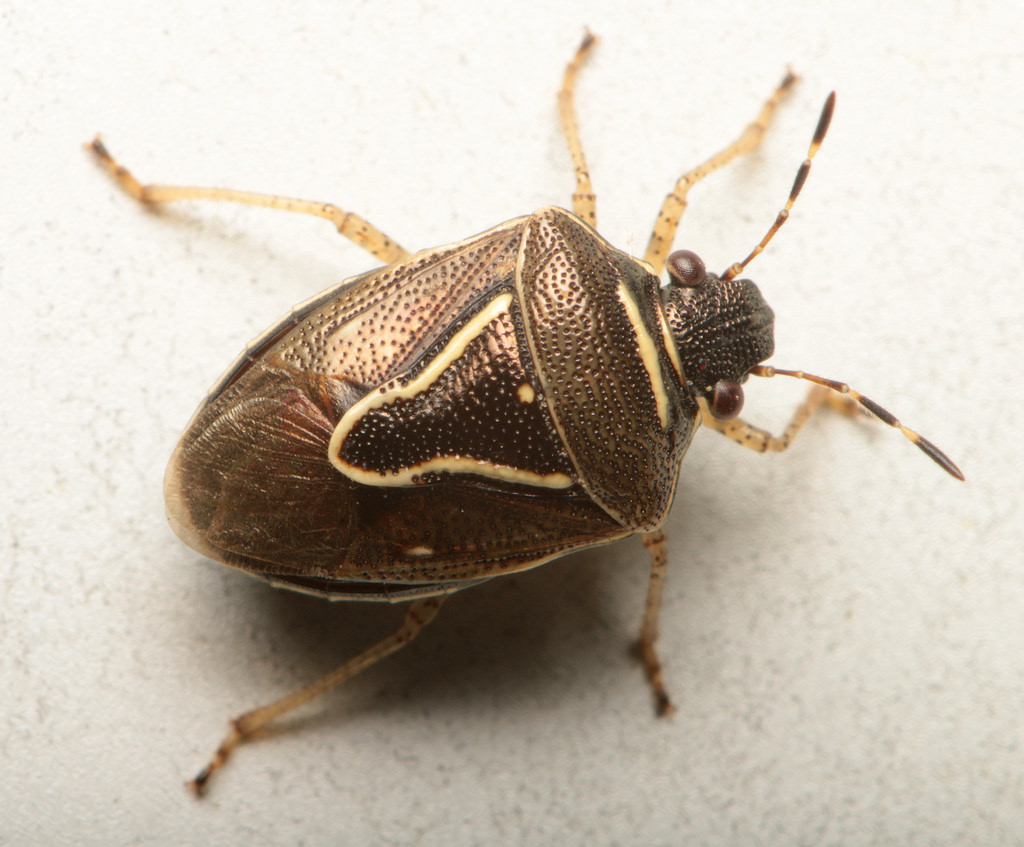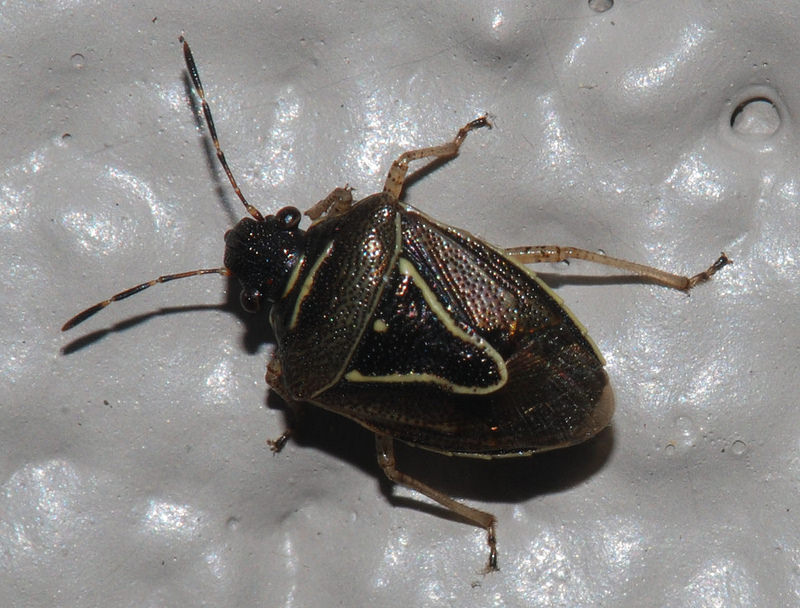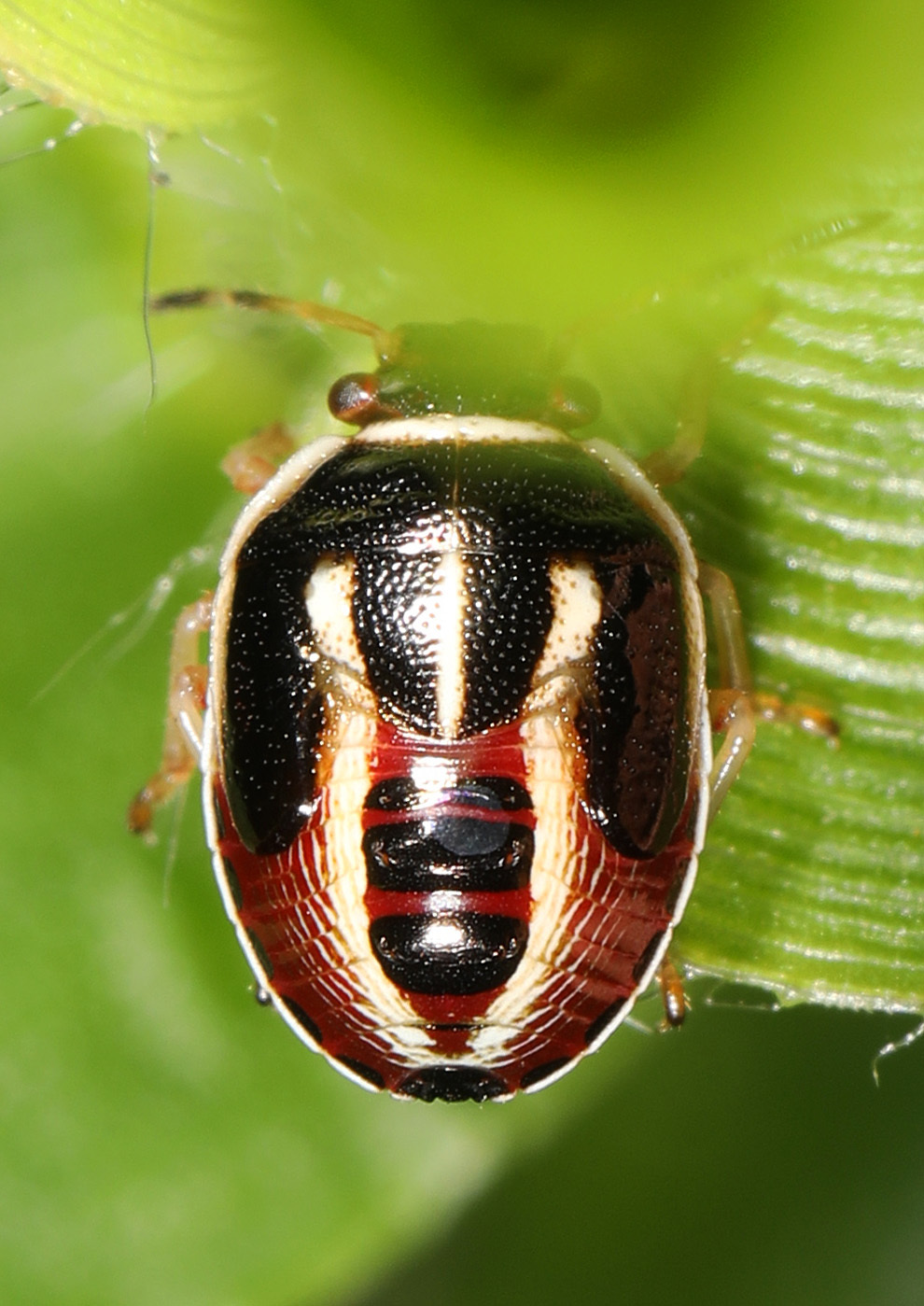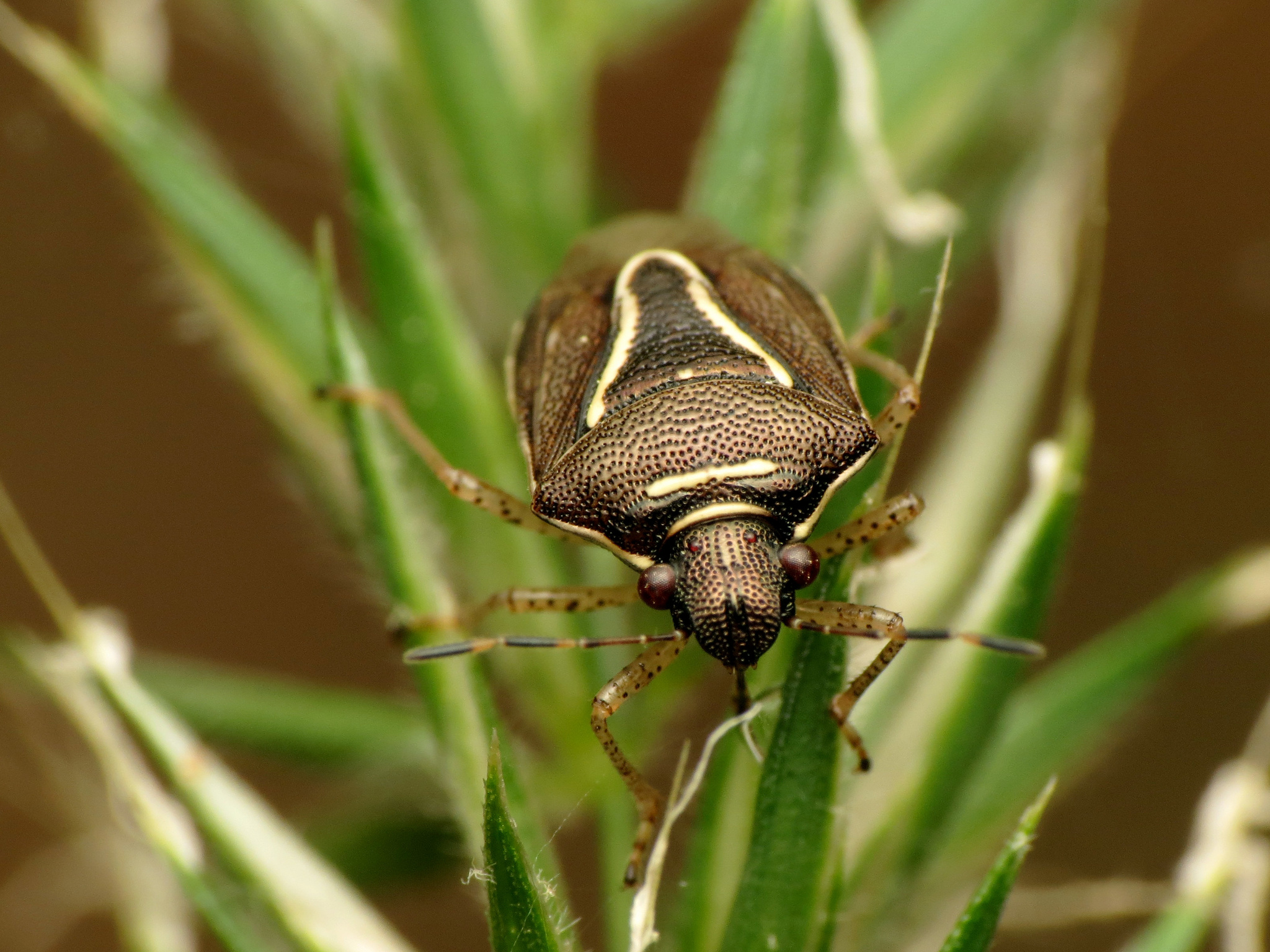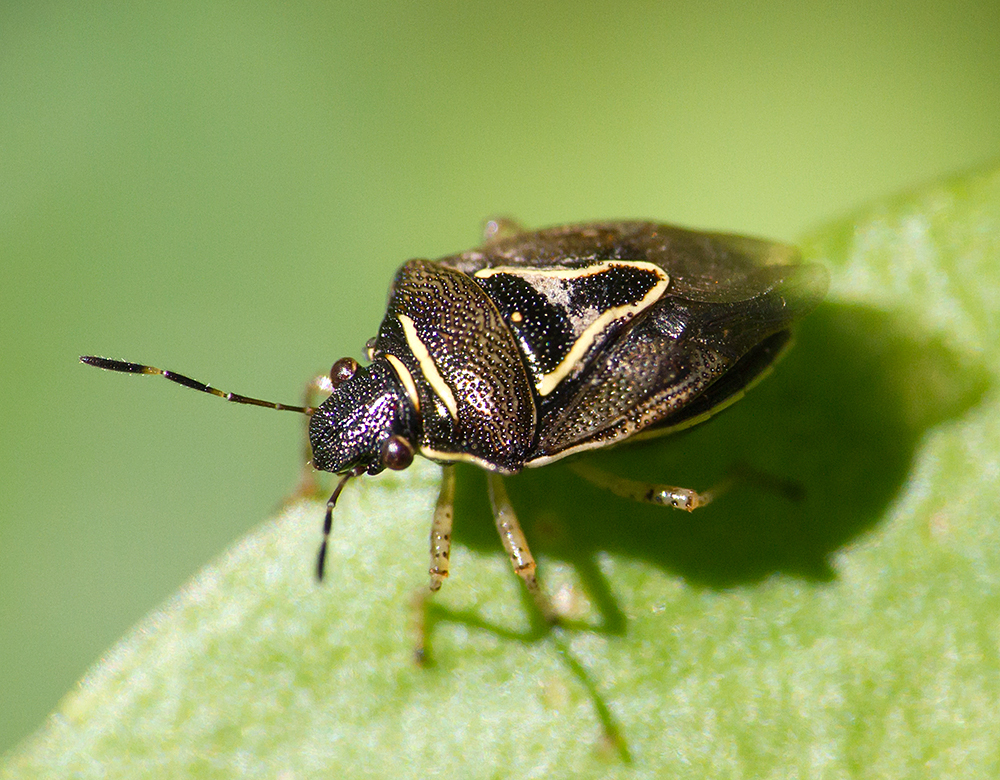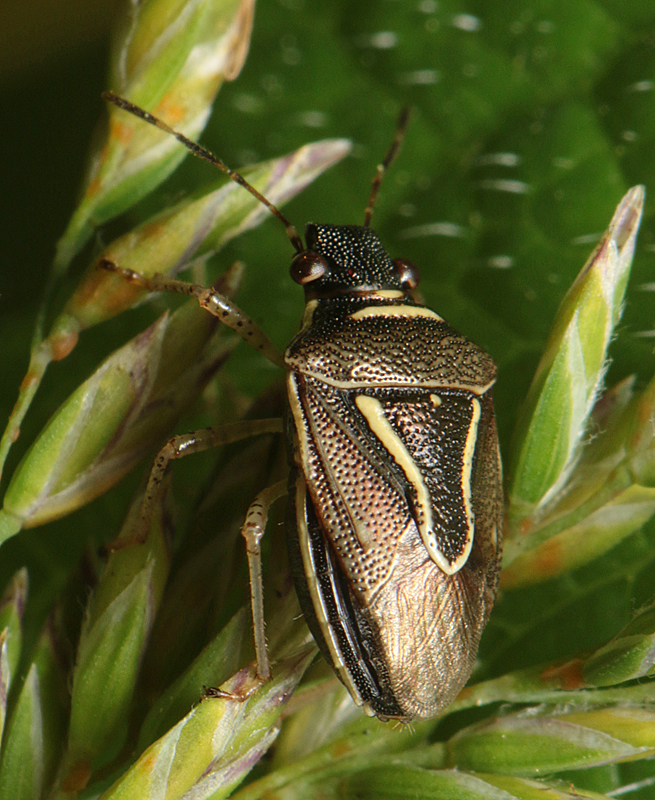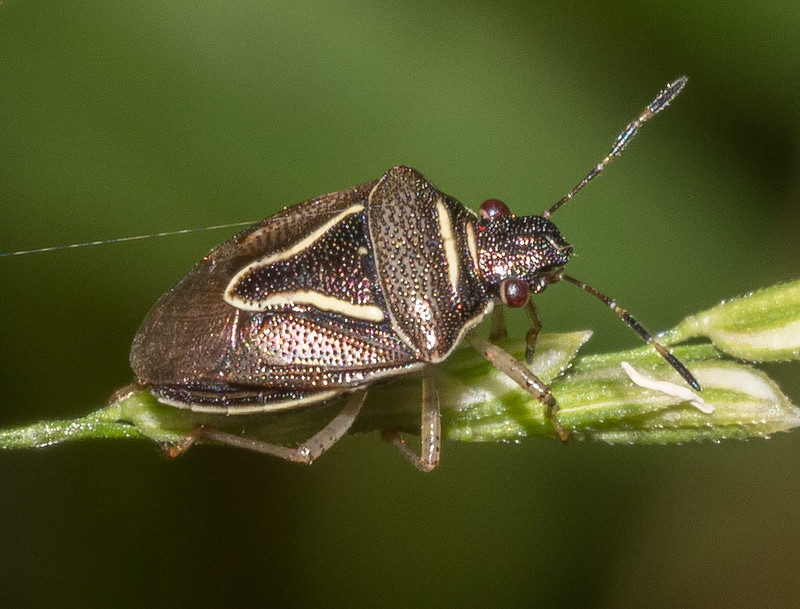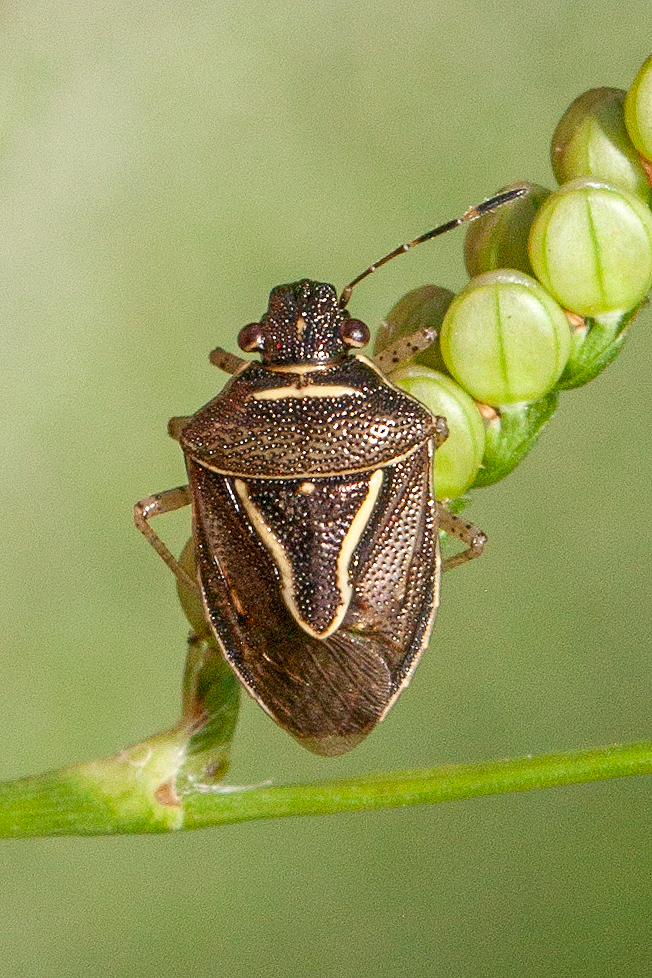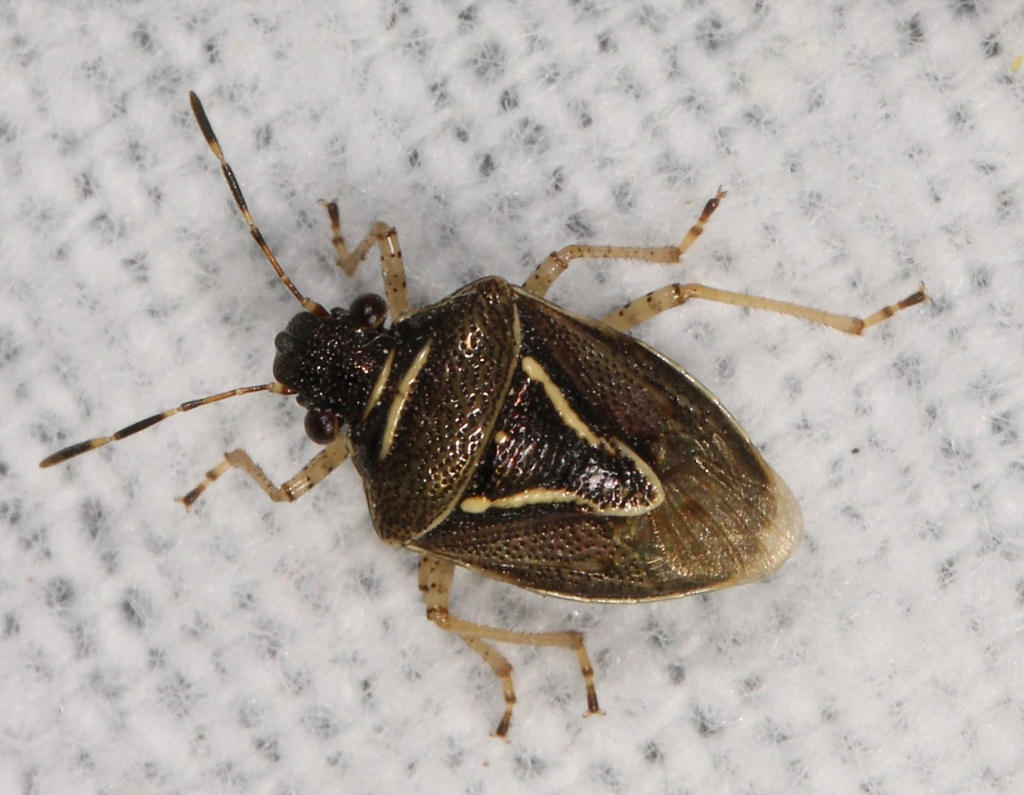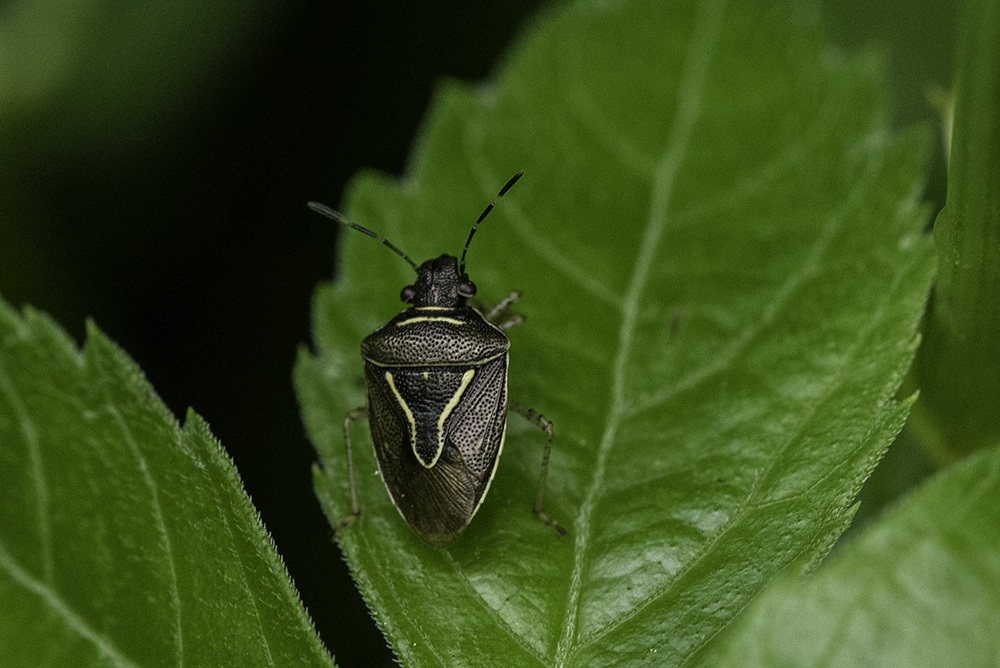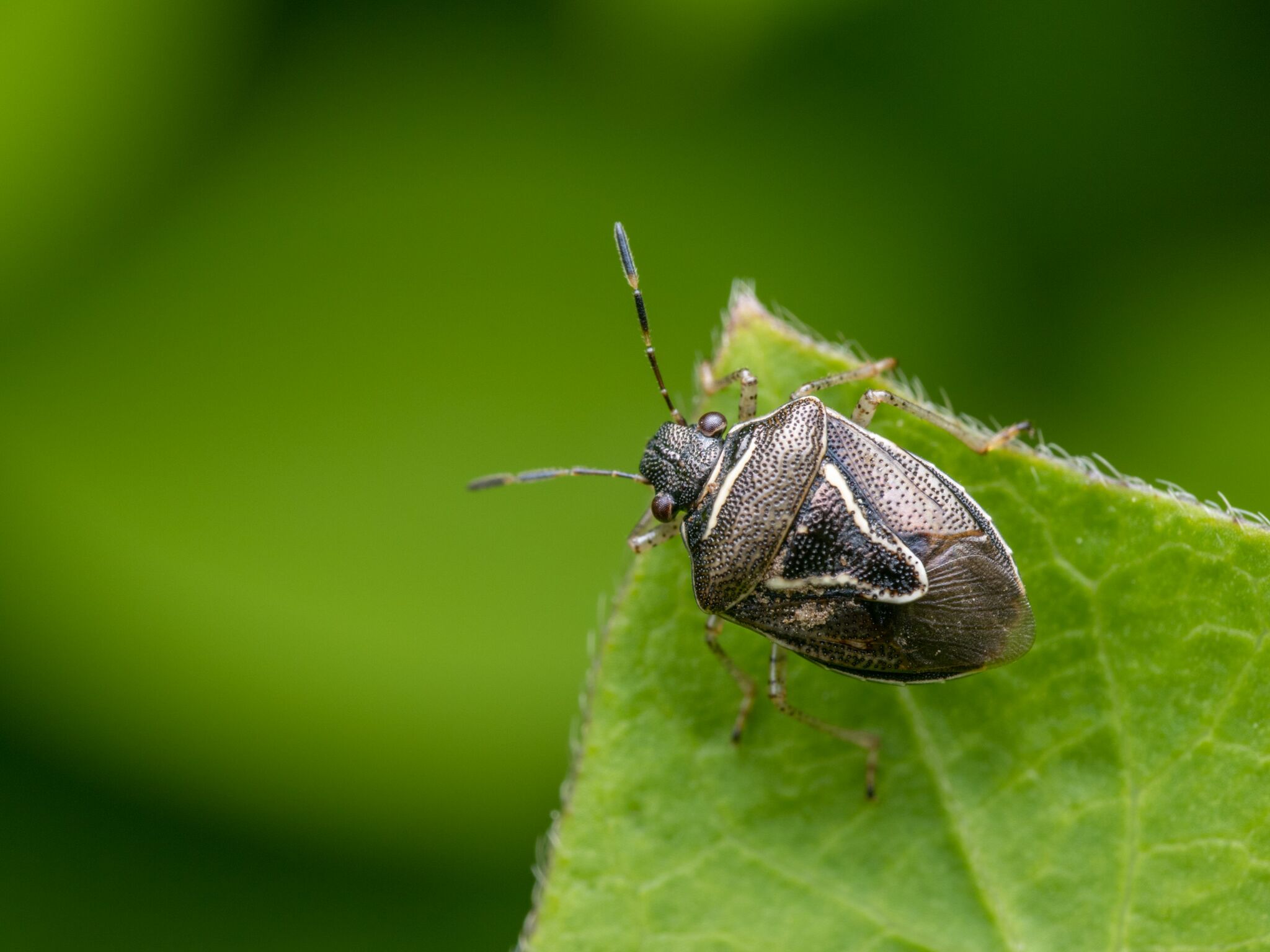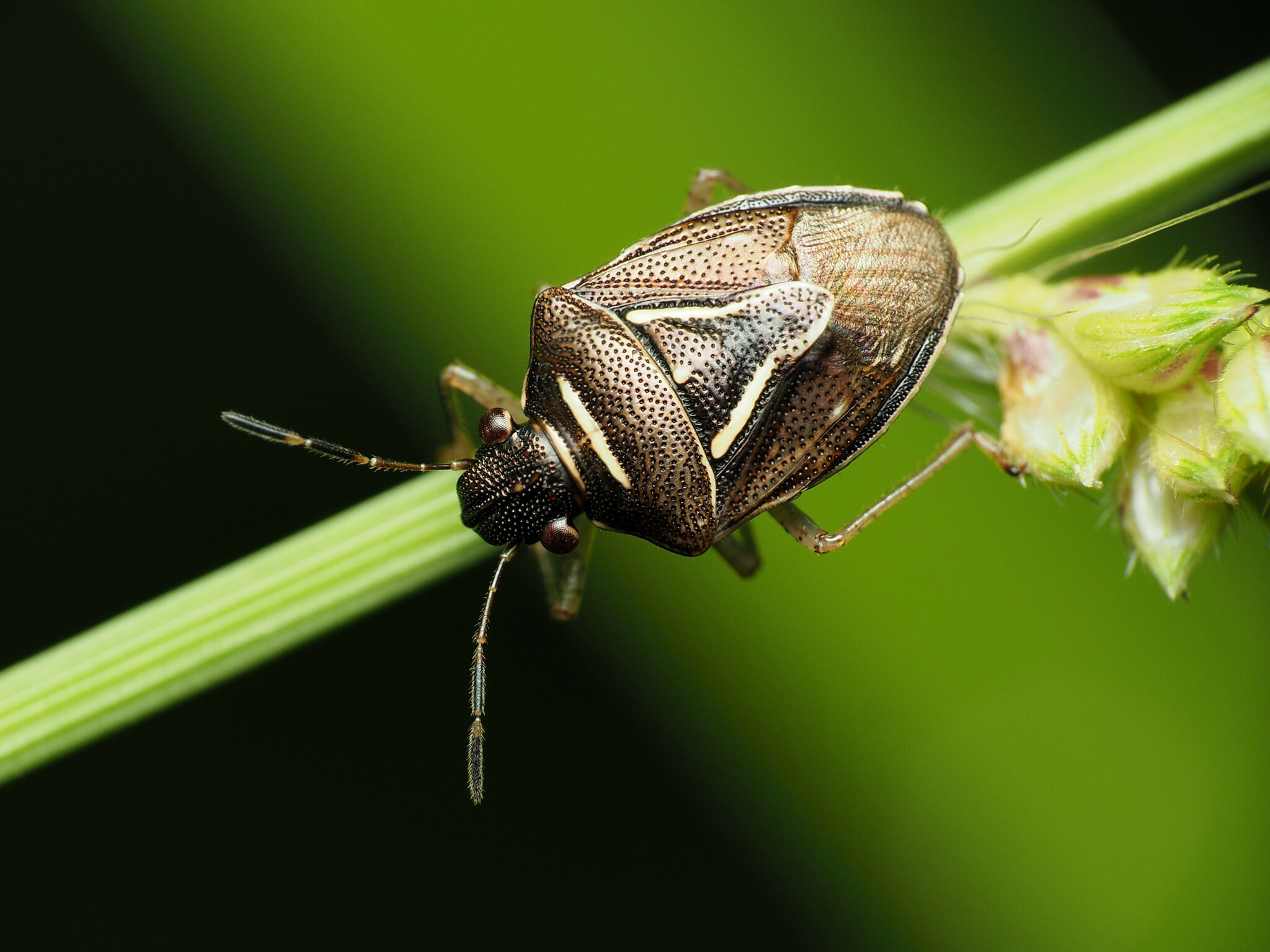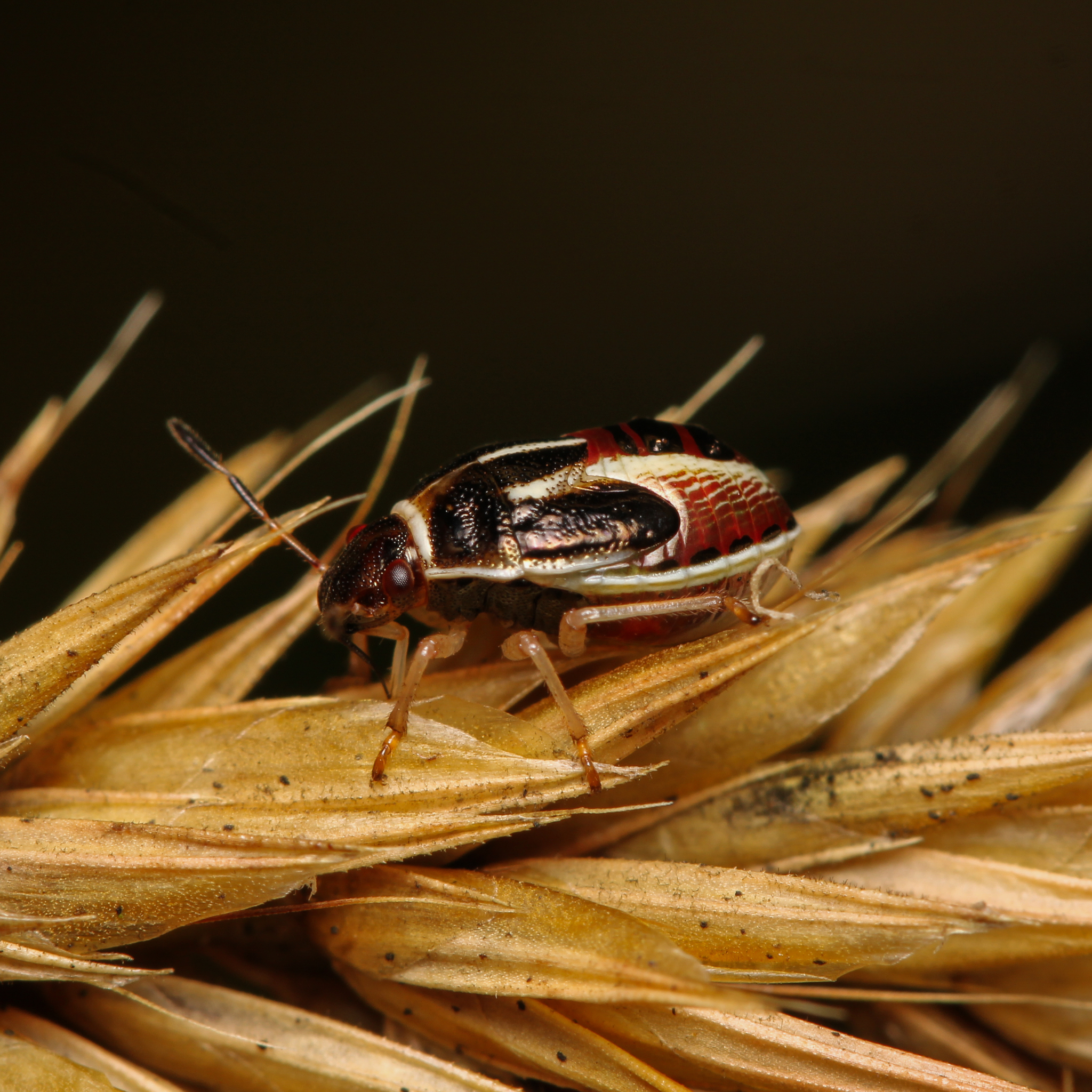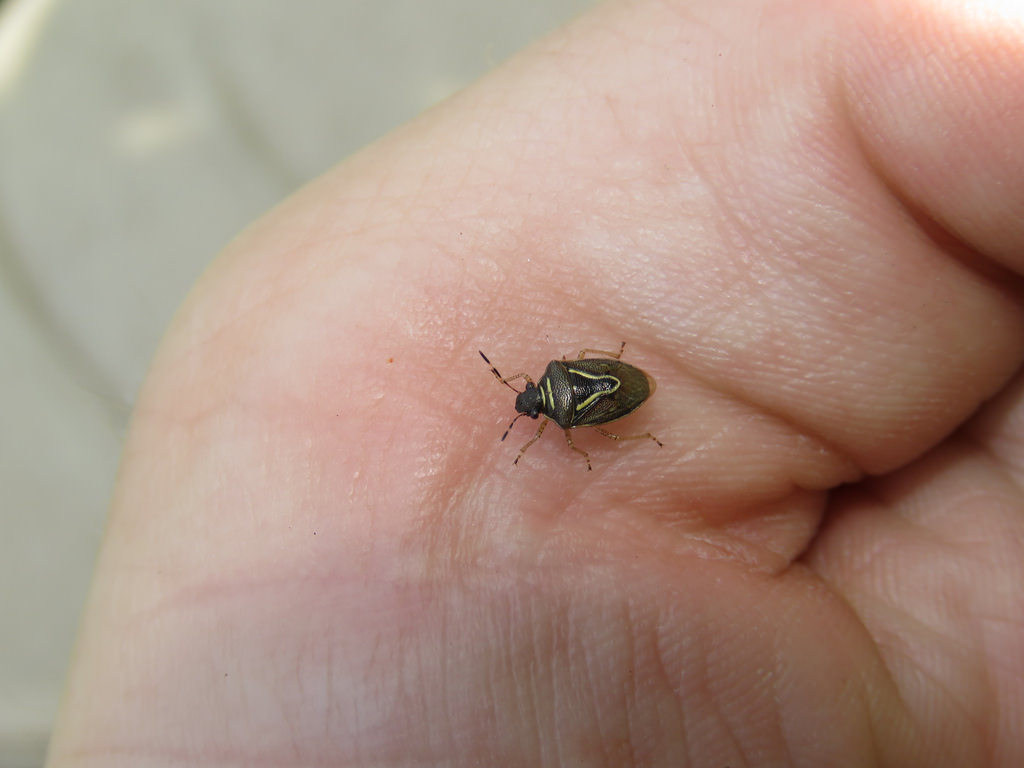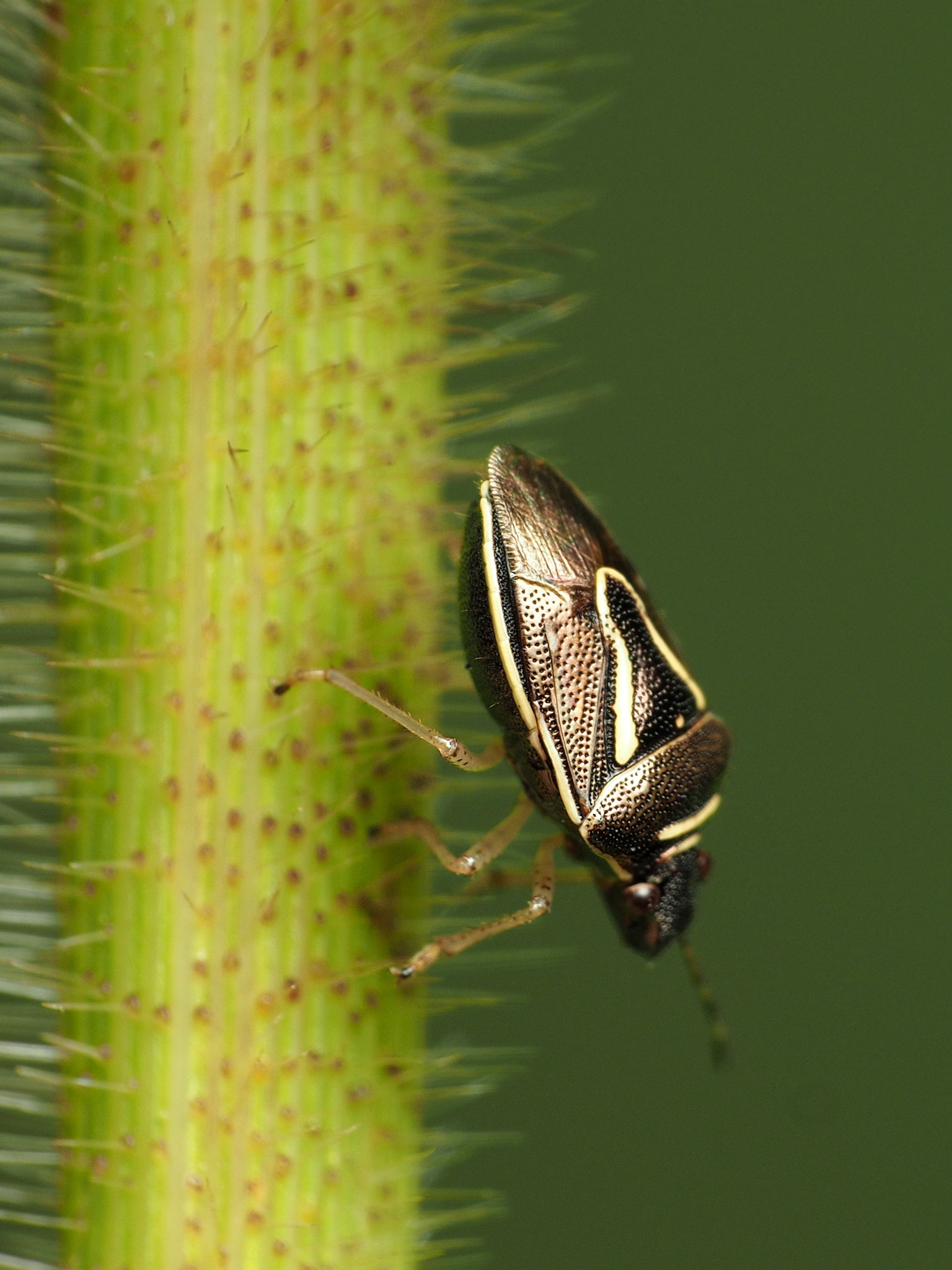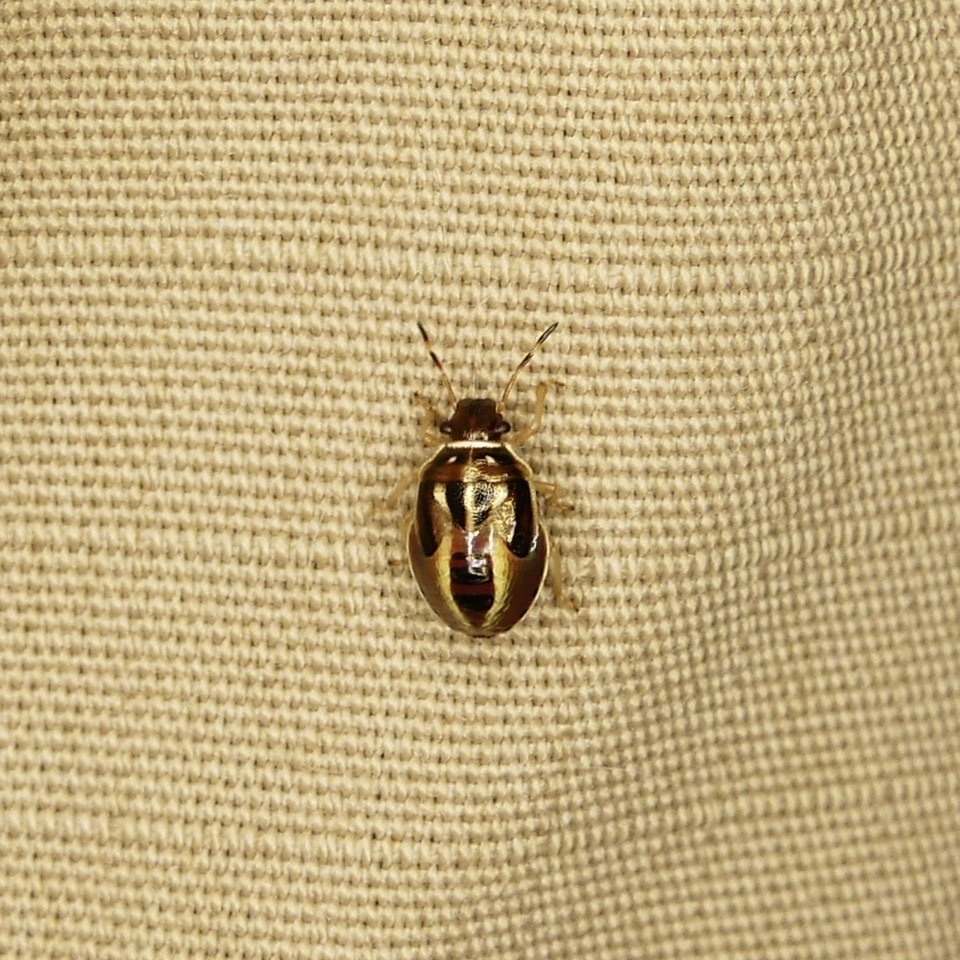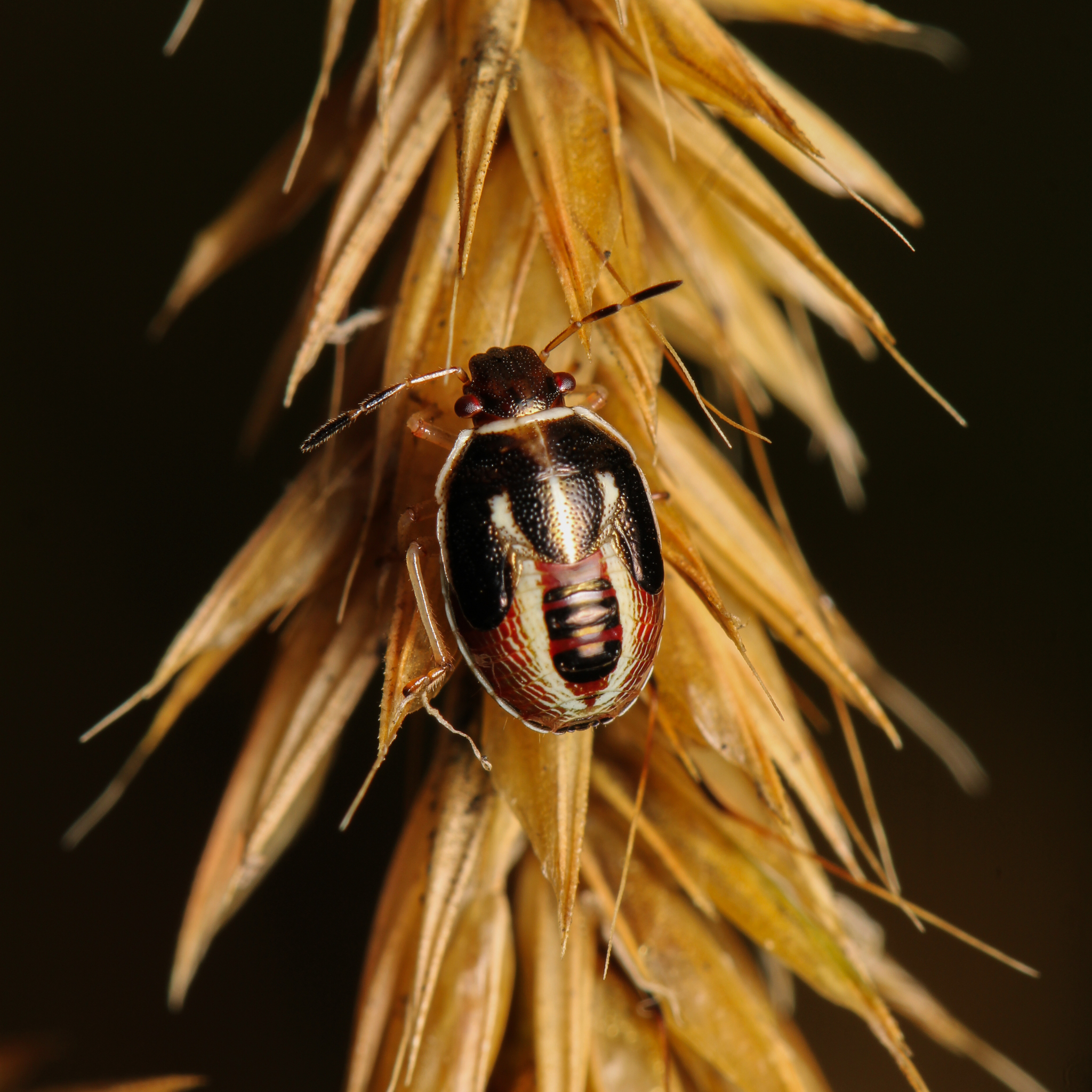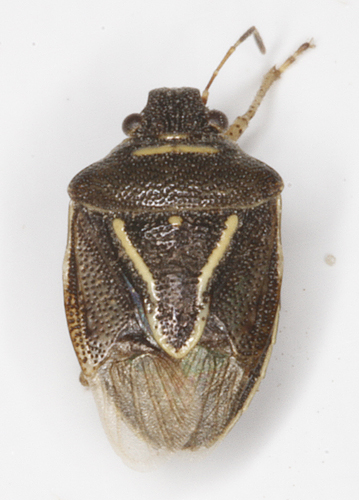Map Snapshot























130 Records
Seasonality Snapshot
Source: Wikipedia
| Mormidea lugens | |
|---|---|

| |
| Scientific classification | |
| Domain: | Eukaryota |
| Kingdom: | Animalia |
| Phylum: | Arthropoda |
| Class: | Insecta |
| Order: | Hemiptera |
| Suborder: | Heteroptera |
| Family: | Pentatomidae |
| Genus: | Mormidea |
| Species: | M. lugens
|
| Binomial name | |
| Mormidea lugens (Fabricius, 1775)
| |
Mormidea lugens is a species of stink bug in the family Pentatomidae found in the Caribbean, Central America, and Eastern North America.[1][2][3][4][5][6] In Illinois, adults have been observed emerging from overwintering sites in late April, and continue to be observed until early November, and appear to be bivoltine in this area.[6] Eggs are approximately 0.7 millimetres (0.028 in) in diameter, pale yellow, and laid in small clusters of 6 to 11 eggs (mean = 9.6).[6] Adults are bronze in color, with a white-yellow border around the scutellum,[1] and are 5.0–7.2 millimetres (0.20–0.28 in) in length.[7] In laboratory conditions, at approximately 24 °C (75 °F), development from eggs to adults has been documented to take between 39 and 50 days, and appears to be affected by the species of host plant.[6] Mormidea lugens has been documented to feed on timothy, sedges (including Carex shortiana, C. amphibola, C. normalis), as well as deer-tongue grass (Panicum clandestinum), and Bosc's panic-grass (P. boscii). It has been collected from pale sedge (C. blanda) and wide-leaved spiderwort (Tradescantia subaspera) but has not observed feeding on these species, and deer-tongue grass appears to be an insufficient food source for development.[6]

References
[edit]- ^ a b "Mormidea lugens Species Information". BugGuide.net. Retrieved 2018-03-06.
- ^ "Mormidea lugens Report". Integrated Taxonomic Information System. Retrieved 2018-03-06.
- ^ "Mormidea lugens Overview". Encyclopedia of Life. Retrieved 2018-03-06.
- ^ "Mormidea lugens species details". Catalogue of Life. Retrieved 2018-03-06.
- ^ "Mormidea lugens Contributed Images Map". BugGuide. Retrieved 2019-05-14.
- ^ a b c d e McPherson, J. E. (15 November 1974). "Notes on the Biology of Mormidea lugens and Euschistus politus (Hemiptera: Pentatomidae) in Southern Illinois". Annals of the Entomological Society of America. 67 (6): 940–942. doi:10.1093/aesa/67.6.940. Retrieved 14 May 2019.
- ^ McPherson, J.E. (1982). The Pentatomoidea (Hemiptera) of Northeastern North America. Southern Illinois University Press. ISBN 0-8093-1040-6.
Further reading
[edit]- Arnett, Ross H. Jr. (2000). American Insects: A Handbook of the Insects of America North of Mexico. Vol. 2nd Edition. CRC Press. ISBN 0-8493-0212-9.
- Aukema, Berend; Rieger, Christian, eds. (2006). Catalogue of the Heteroptera of the Palaearctic Region, vol. 5: Pentatomomorpha II. The Netherlands Entomological Society. ISBN 9071912280.
- Blatchley, W.S. (1926). Heteroptera, or true bugs of eastern North America, with especial reference to the faunas of Indiana and Florida. Nature Publishing. doi:10.5962/bhl.title.6871.
- Henry, Thomas J.; Froeschner, Richard C., eds. (1988). Catalog of the Heteroptera, or True Bugs, of Canada and the Continental United States. E. J. Brill. ISBN 0-916846-44-X.
- McPherson, J.E. (1982). The Pentatomoidea (Hemiptera) of Northeastern North America. Southern Illinois University Press.
- Paiero, S.M.; Marshall, S.A.; McPherson, J.E.; Ma, M.S. "Stink bugs (Pentatomidae) and parent bugs (Acanthosomatidae) of Ontario and adjacent areas...". Canadian Journal of Arthropod Identification. 24: 1–183.
- Rider, David A. (2012). "The Heteroptera (Hemiptera) of North Dakota I: Pentatomorpha: Pentatomoidea". The Great Lakes Entomologist. 45 (3–4): 312–380. ISSN 0090-0222.
- Walker, Francis (1871). Catalogue of the Specimens of Hemiptera Heteroptera in the Collection of the British Museum, pt. IV. British Museum. doi:10.5962/bhl.title.9254.
External links
[edit] Media related to Mormidea lugens at Wikimedia Commons
Media related to Mormidea lugens at Wikimedia Commons
